Terminal velocity
Free fall An object’s weight remains the same throughout a fall. The objects weight is the force of caused by the mass being acted on it by Earth's gravity. Terminal velocity The mass and the shape of an object falling through a fluid affect how fast it can go. The more mass the object has, the more weight it has.
The two main forces that act upon an object that is falling are weight and air resistance.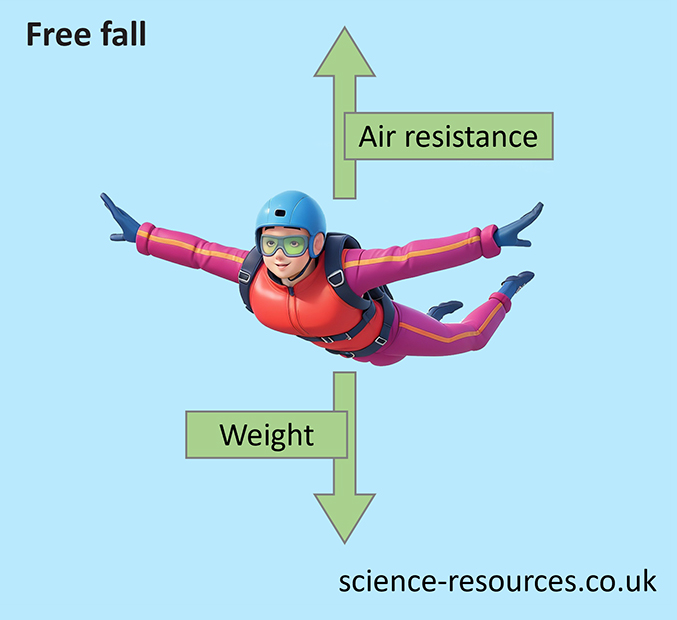
Air resistance is a frictional force that slows down the object’s motion. But in a vacuum, there is no air resistance. A falling object speeds up at first. The more speed it has, the more air resistance it faces.
Terminal velocity is the maximum speed of an object when it falls freely through a gas or liquid. At this speed, the object stops accelerating because the forces on it are equal. For example, a skydiver who jumps out of a plane starts speeding up because their weight is greater than the air resistance. But as they go faster, the air resistance also increases until it matches their weight, so they stop getting faster. This is their terminal velocity. 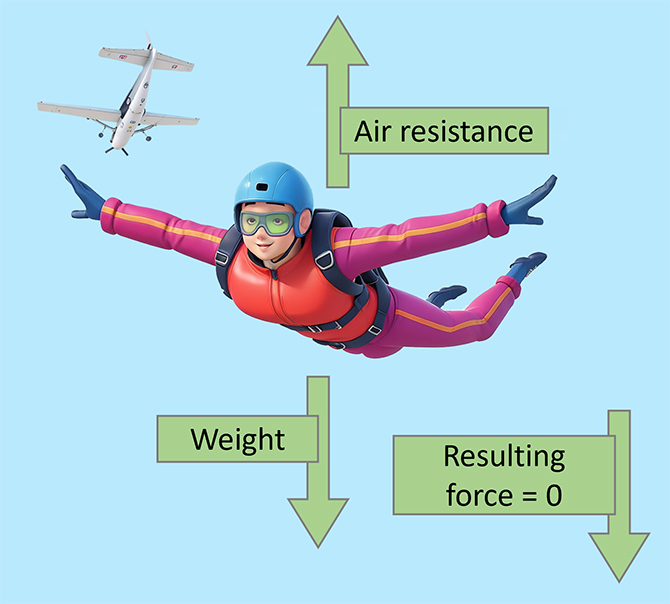
Terminal velocity is affected by two main factors:
Objects that have big surface areas face a lot of air resistance when they move. These objects are said to be less aerodynamic.
High terminal velocity Low terminal velocity Smaller surface area = lower air resistance. For example, a skydiver has a small surface area that makes little air resistance. Because of this, the skydiver is able to reach a high terminal velocity. Larger surface area = higher air resistance. For example, a parachutist who opens their parachute has a big surface area that makes a lot of air resistance. Because of this, the parachutist is able to reach a lower terminal velocity. How to describe the motion of a falling object How to describe the motion of a falling object A skydiver jumps out of an aeroplane and begins to accelerate. As the skydiver continues to accelerate, the air resistance increases. The skydiver reaches ‘terminal velocity’ The weight and air resistance are the same. As the skydiver pulls their parachute, the surface area is drastically increased. This increases the air resistance and slows the skydiver down. As the skydiver is starts to decelerate, the air resistance decreases. The skydiver has now reached a low terminal velocity. This terminal velocity is much lower than the one before the parachute was opened.

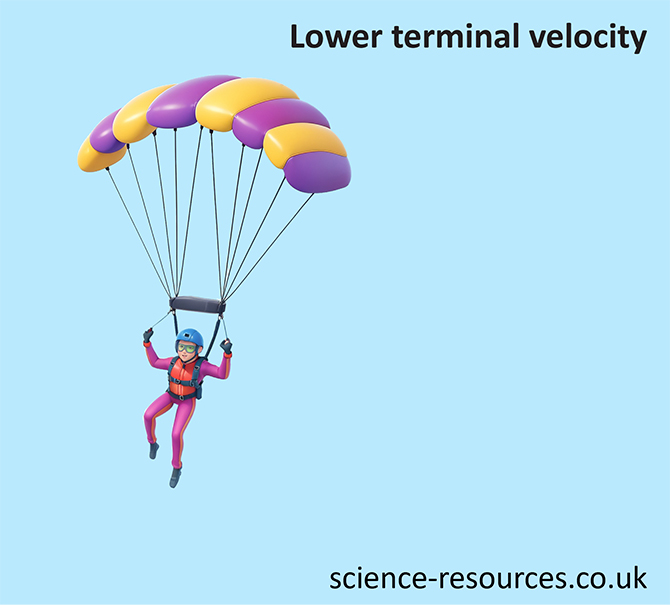
What happens as a parachutist jumps out of a plane, freefalls, and then opens their parachute?
What happens as a parachutist jumps out of a plane, freefalls, and then opens their parachute?
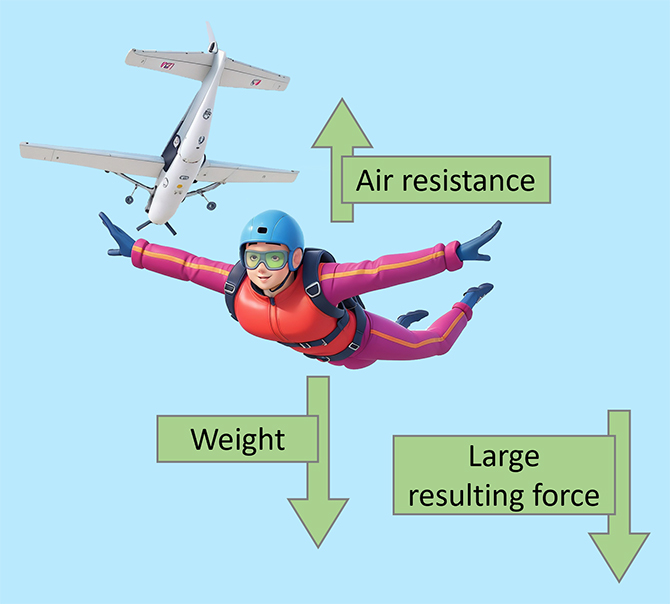
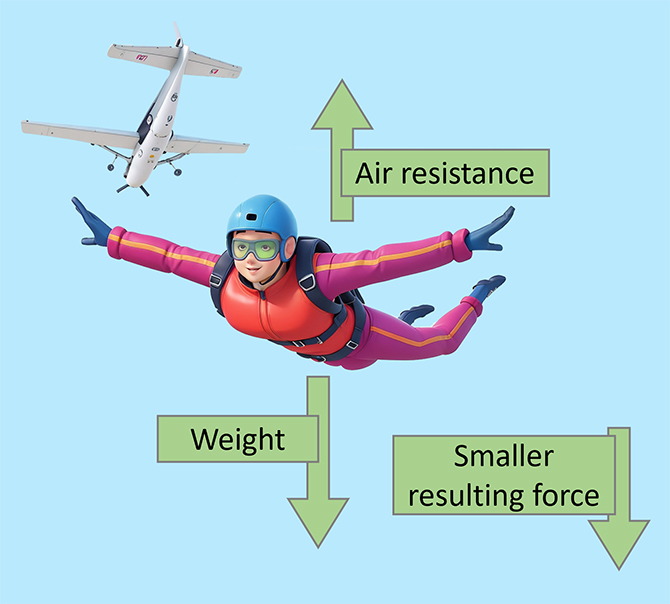

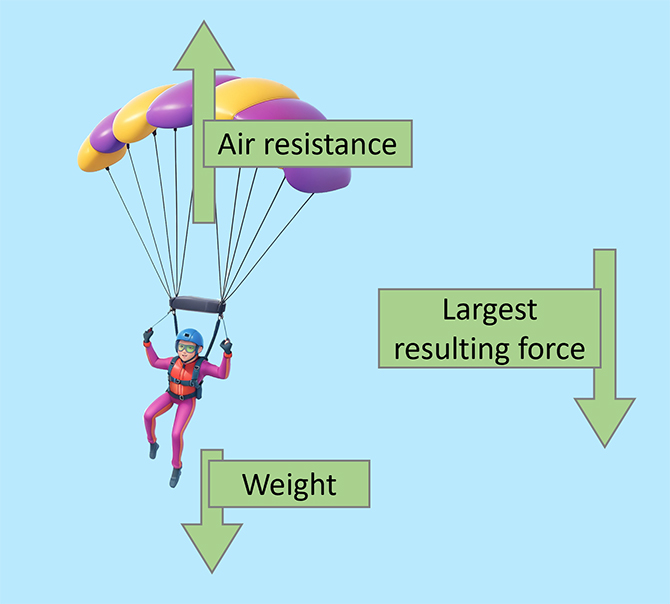
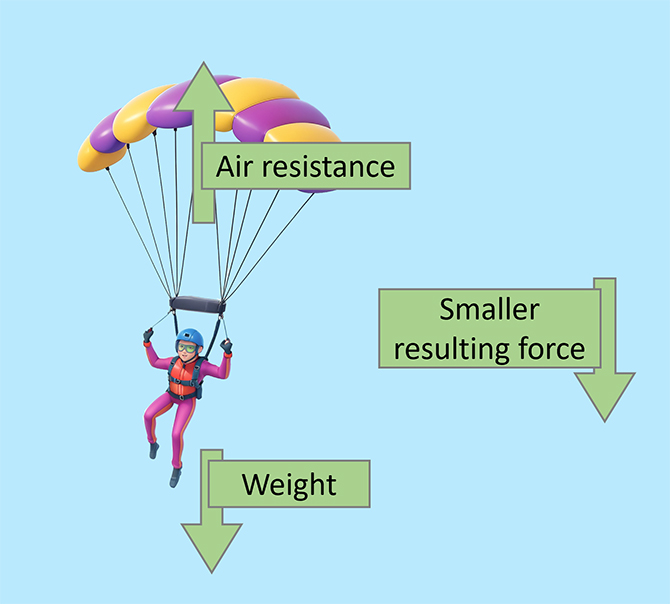
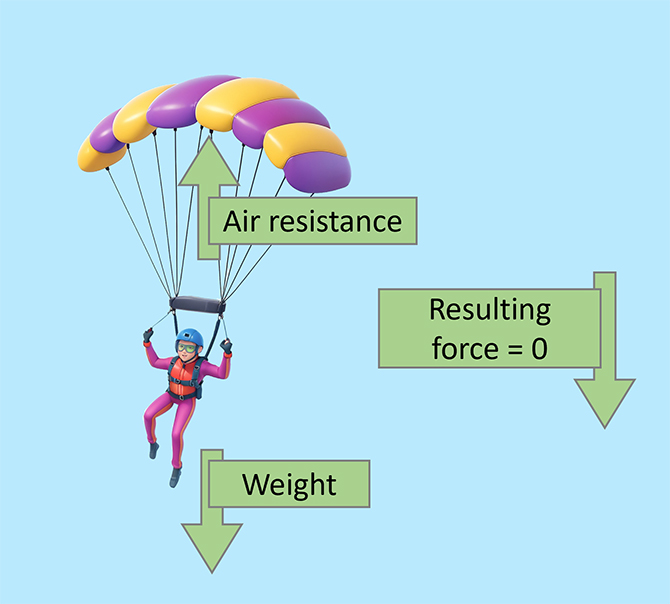
Summary: